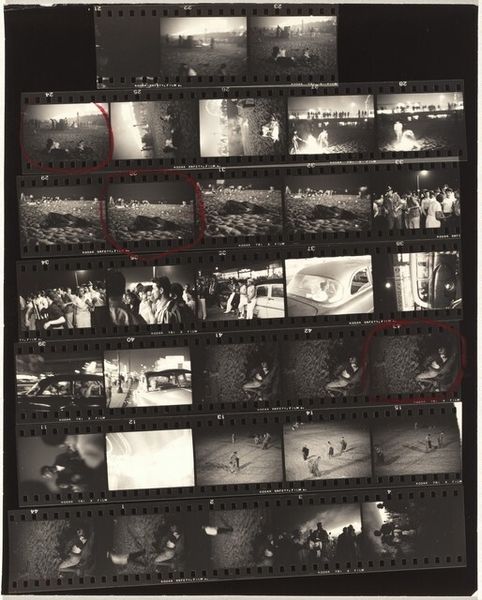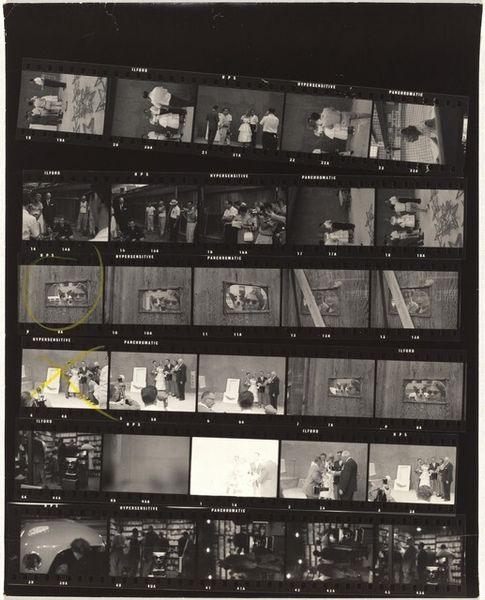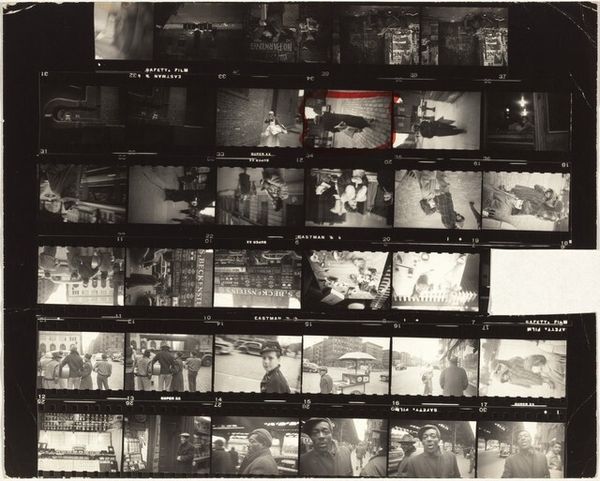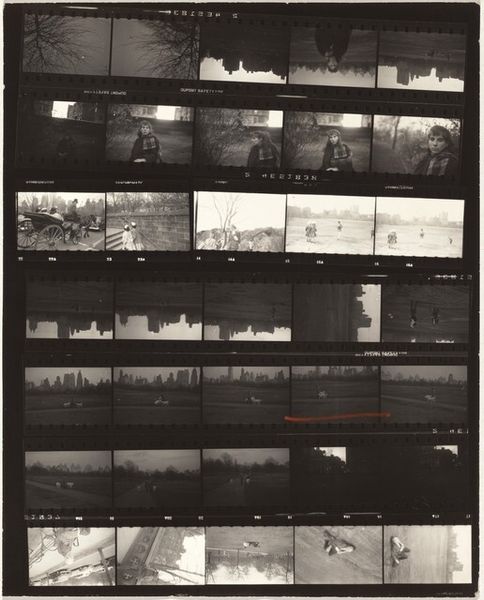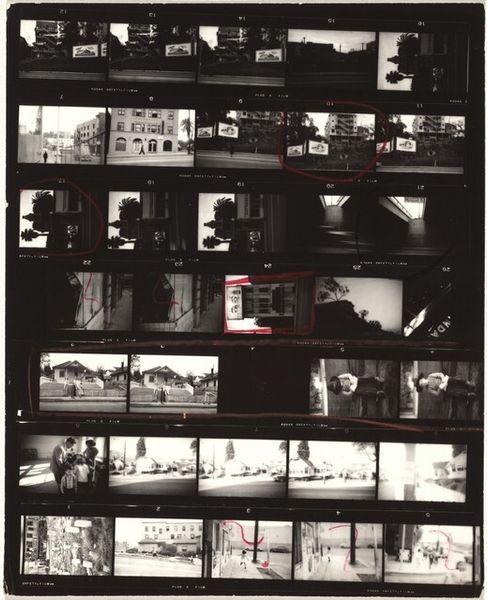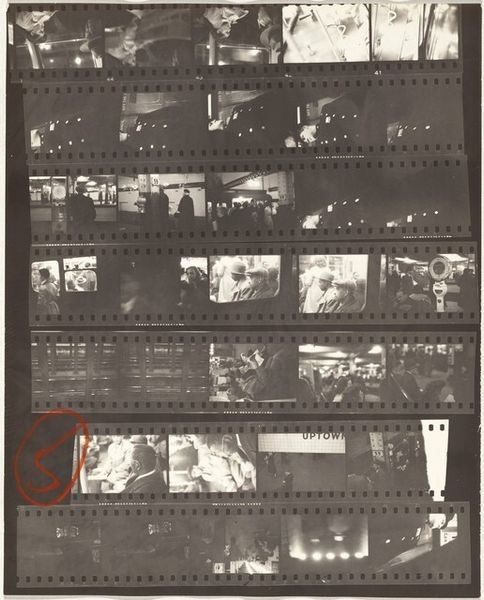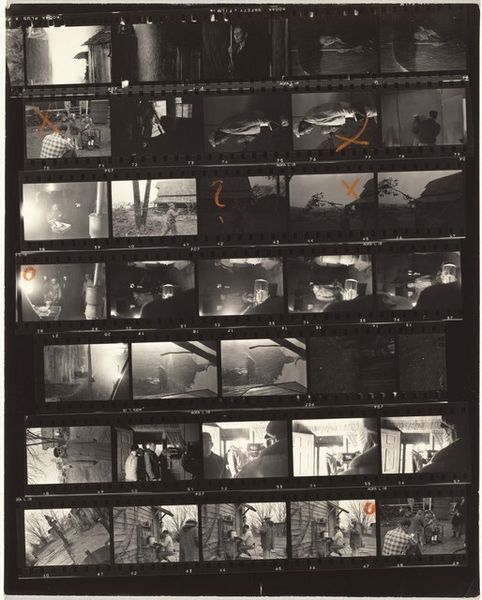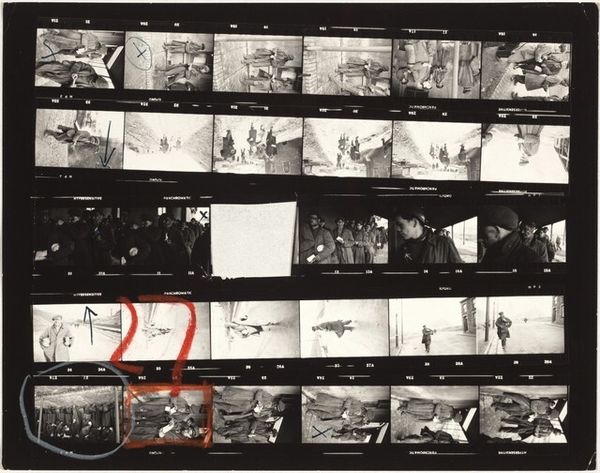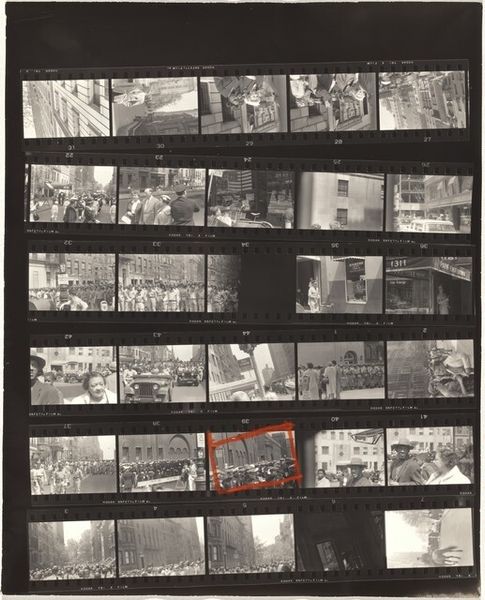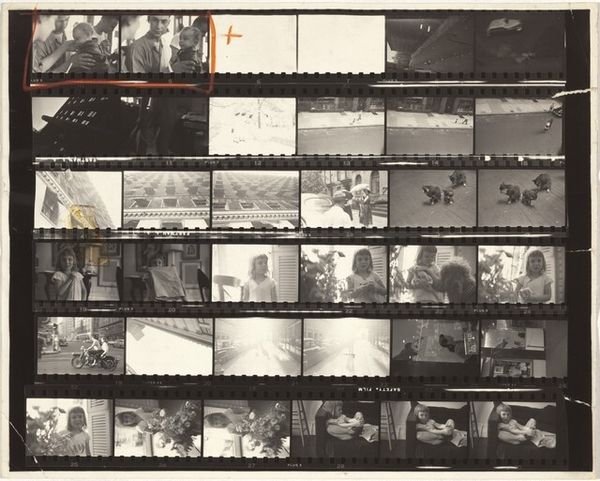
contact-print, photography
#
film photography
#
landscape
#
contact-print
#
archive photography
#
street-photography
#
photography
#
modernism
Dimensions: overall: 25.3 x 20.2 cm (9 15/16 x 7 15/16 in.)
Copyright: National Gallery of Art: CC0 1.0
Editor: Here we have Robert Frank’s "Guggenheim 675—Elko, Nevada," a contact print from 1956. It's raw, almost like a behind-the-scenes look at the photographic process. I’m struck by how different this feels from a polished, final image. What exactly are we seeing here, and what's the story behind this approach? Curator: What we see is Frank laying bare the process, revealing not just the chosen image but the outtakes, the experiments. The contact sheet becomes a commentary itself, resisting the myth of the perfect, singular shot. How does this relate to the post-war American narrative he's building in *The Americans*? Editor: I see what you mean. He is making visible the selection, so maybe we should look at his point of view through this… but, why do you think that the format choice, the "archive photography", highlights the contrast and American social issues of the 1950s? Curator: The contact sheet serves as a counter-narrative. Frank’s vision of America diverged sharply from the idealized imagery prevalent at the time. Here, we see repetition, slight variations, and even mundane scenes—questioning the idea of a singular, representative “American experience,” especially one that often ignored marginalized voices and realities. Look at how the same subject of this simple architecture has been captured by his lens multiple times. Editor: So, by showing us everything, he challenges the idea of a perfect image, suggesting that the truth is more complex and multifaceted? Is he almost implying that the selection is the tool by which he shapes the narrative to serve as social critique? Curator: Precisely. Frank gives us a glimpse of the socio-political dimensions, which invite us to challenge mainstream portrayals and consider what perspectives were often omitted. This aesthetic challenges a canon. Editor: It is thought-provoking to see how the presentation itself becomes part of the statement, highlighting both the artistry and the social context of Frank’s work! Curator: Exactly. Hopefully it gives all of us some room to think more deeply!
Comments
No comments
Be the first to comment and join the conversation on the ultimate creative platform.
